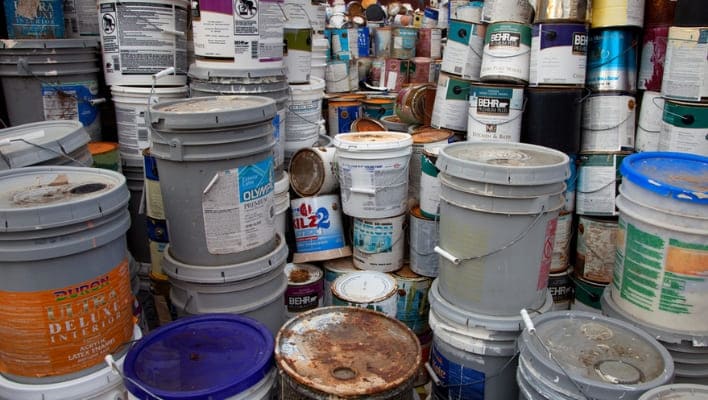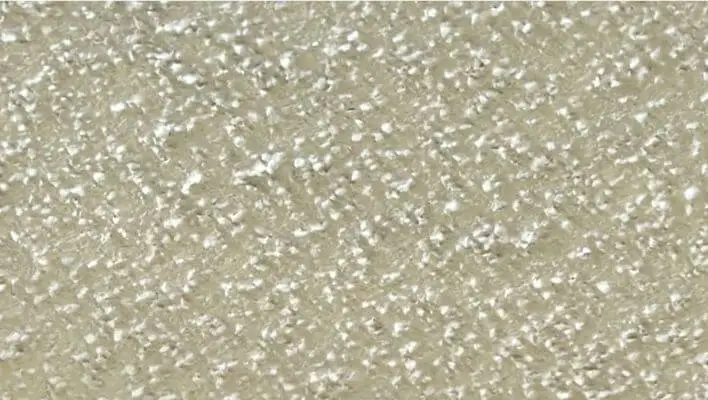You probably know about the glossy finish, durability, and lovely hard coat of enamel paint, which is excellent for all types of painting projects. However, it is challenging to work with enamel paint since it has a thicker consistency, and you will need to use a paint thinner for a better painting experience and good results.
With thinning enamel paint, you can achieve a smooth, shiny appearance on metal surfaces, walls, furniture, windows, doors, and trim, as well as in the bathroom and kitchen. We can find enamel thinners in a variety of brands and types today. Thus, you should figure out which type of thinner will work best for spraying enamel paint. Plus, you can quickly thin enamel paint on your own by following the steps in this post on how to thin enamel paint for sprayers.
Table of Contents
- Spraying enamel paint: What are the best enamel thinners?
- Do you need to thin enamel paint?
- Thinning Enamel Paint For Spraying
- Thinning Enamel Paint With Mineral Spirits
- Thinning Enamel Paint With Acetone
- Thinning Enamel Paint With Turpentine
- Thinning Enamel With Lacquer Thinner
- Thinning Enamel Paint With Water
- Thinning Enamel Paint With Alcohol
- Thinning Enamel Paint For Brushing
- How to thin enamel paint for spray gun?
- Choose The Perfect Location
- Ensure Your Safety
- Inspect The Paint
- Preparation Of Enamel Paint
- Perform Testing
- Thinning Enamel Paint
- Spray Pattern
- The uses of enamel paint Enamel paints
- Benefits of enamel paint
- Avoid these mistakes
- 1. Too much thinning
- 2. Choosing the wrong thinner
- Can you use enamel without thinning?
- Conclusion on spraying enamel paint
- FAQs on How To Thin Enamel Paint?
- how to mix enamel paint for a spray gun?
- Why would you use enamel thinner?
- Does enamel paint work with paint sprayers?
- Can you make paint thinner at home?
- How to thin Industrial enamel?
- Can enamel paint be dissolved in water?
- How do you soften enamel paint?
Spraying enamel paint: What are the best enamel thinners?
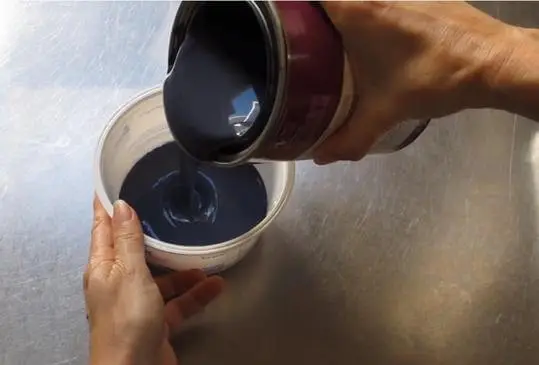
Methylated spirits, white spirits, turpentine, mineral spirits, acetone, lacquer thinner, and rubbing alcohol are the best enamel paint thinners. Using these chemicals in the right proportions and wearing the proper protective equipment is essential to avoid contact with the skin and exposure to toxic fumes.
On the other hand, commercial enamel thinners are more expensive and don’t consistently achieve similar results.
We have compiled a guide on enamel paint thinners. Listed below are the different paint thinners for enamel paints.
| Thinner for Enamel Paint | Use |
| Turpentine | It is an option, but not recommended! |
| Acetone | It may work, but it is not suitable for plastic painting. |
| Water | Yes for water-based enamel paint. However, you can’t use it with oil-based paint! |
| White Spirit / Mineral Spirit | Yes. More likely, the best solution for thinning enamel paints. |
| Alcohol | It may work but the outcome may vary. Therefore, it’s not recommended. |
| Lacquer Thinner | It is an alternate solution but not advisable. For enamel paints, it has a lot of drawbacks. |
Do you need to thin enamel paint?
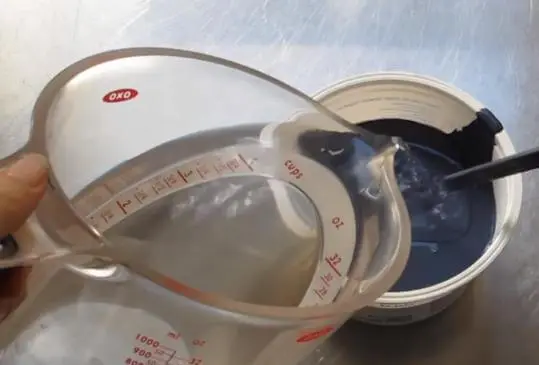
Enamel paint can be used in a variety of ways. As you open the can, you’ll find that enamel paint is very thick, but it is not always necessary to thin it. If you are painting a large surface with a regular brush, you can use enamel paint without thinner. However, you should use a paint thinner if you use an airbrush since it will create a more fluid consistency.
It is a good practice to thin paint for fine detail painting, whereas thick paint is best for painting large surfaces. Plus, If you want to paint miniatures, you can buy enamel paint with a thin consistency that requires no paint thinner. Learn more about how to paint furniture with enamel paint.
Remember that paint thinner is used for more than just thinning out the paint.

Useful Resource: If you’re considering a home renovation project, don’t forget to check out our Wise Owl One Hour Enamel paint review for insights into this fast-drying paint.
Thinning Enamel Paint For Spraying
You should always consider whether the paint is water-based or solvent-based (oil-based) when choosing enamel paint thinners or any paint thinners. As we all know that it is impossible to mix oil and water. Even though some paint thinners are compatible with both water-based and oil-based paints and others can be used with water-based paints or oil-based only.
Thinning Enamel Paint With Mineral Spirits
White Spirit or Mineral Spirits, is a widely used paint thinner for enamel paints. It is commonly found in commercial enamel paint thinners.
Thinning enamel paint with mineral spirits is preferred because it maintains the paint’s original properties, such as color and brightness, while only adjusting its thickness. Mineral spirits are especially suitable for airbrushing enamel paint as they offer a cost-effective alternative to specialized enamel paint thinners.
By using mineral spirits, you can still achieve the desired glossy finish without investing heavily in additional thinning agents. If you wish to achieve a shiny and smooth appearance on doors, walls, or trim, thinning semi-gloss paint with mineral spirits can be effective.
As a general guideline, start with a ratio of 4 ounces of mineral spirits per gallon of oil-based paint. Remember to only use mineral spirits with oil-based paint and never with water-based paint.
Thinning Enamel Paint With Acetone
Acetone is an excellent cleaner for removing enamel paint from various surfaces, and it is insufficient for thinning out the consistency of your paint when painting or airbrushing.
For painting, it’s best to dilute acetone with water rather than use it directly because it can cause difficulties. For example, if you use acetone on a nylon brush, it will melt the bristles. The solvent acetone may also melt many types of plastic since it is a powerful solvent.
Additionally, the acetone solution does not work with oil-based enamel paint and results in an uneven application.
Thinning Enamel Paint With Turpentine
Turpentine can help make your paintings more successful when used in the right ratios. It can accelerate drying time for oil-based enamels. Turpentine cleans your brushes exceptionally well and can dissolve relatively complex paint, so it is much better than mineral spirits in this regard.
Usually, turpentine doesn’t appeal to many people because it is toxic and smells exceptionally strongly.
Thinning Enamel With Lacquer Thinner
Mixtures of solvents are lacquer thinners. These paint thinners can be used to thin enamel paints. However, lacquer thinner could produce an unattractive result if you dilute the paint with it.
Also, It might not be safe to paint on plastic with lacquer thinner that contains acetone because it will damage the material.
Thinning Enamel Paint With Water
Water is the most cost-effective and accessible resource available. The majority of enamel paints are oil-based, while water-based enamel paint tends to be harder to find. If you plan to thin enamel paint with water, make sure it is water-based. You cannot thin oil-based paints with water.
Thinning Enamel Paint With Alcohol
It is more effective to use rubbing alcohol as paint thinner if you use water-based enamel paint instead of oil-based enamel paint. Paint thinners like rubbing alcohol are excellent for water-based paints, but oil-based enamel paints may differ.
If your enamel paint is oil-based, it may not work the same as rubbing alcohol. Thus, before you use rubbing alcohol to thin enamel paint, you should check its composition first.
You can use alcohol to thin enamel paint, but the results may vary. If you choose the right kind of alcohol and paint, you can achieve good results, but the wrong choice can also lead to many problems.
Therefore, we suggest mineral spirits as the best choice for enamel paint solvent for consistently good results.
Thinning Enamel Paint For Brushing
You can thin out the enamel paint for brushing to get the correct consistency. This thinning requires you to choose the proper thinner. If you use an airbrush, ensure the enamel paint is properly thinned. If you don’t clean your airbrush gun after using enamel paint, you will end up with uneven spray patterns and clogged airbrushes.
How to thin enamel paint for spray gun?

We have tested several thinning methods but few of them are not appropriate for enamel paint.
Therefore, you should follow the instructions that would work best to minimize over-thinning and avoid a mess.
Choose The Perfect Location
If you need to paint, choose a well-ventilated area because exposure to enamel paint fumes or paint thinners can make breathing difficult.
Because of this, you should open as many windows as you can and turn on the fans to push out the fumes, not just circulate them.
Ensure Your Safety
Put on your safety equipment including safety goggles, a mask with a protective hood, and gloves before beginning any painting project.
Inspect The Paint
You should check the label before opening the paint to find out if it is oil-based or water-based paint. If the solution is oil-based, do not thin it with water. In contrast, if the solution is water-based, you may thin it with water.
Ensure that you follow the recommended thinner ratio and amount. Now, here we also discuss the most common question, how to spray enamel paint?
Preparation Of Enamel Paint
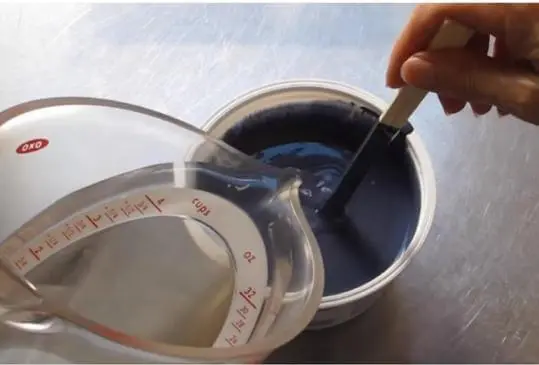
If you’re going to use a spray gun to apply the paint, you should strain the solution through a paint strainer into an empty bucket so you don’t get any lumps in the nozzle.
Perform Testing
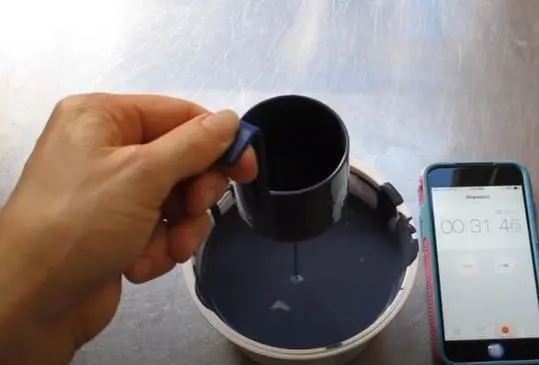
Put the paint into the sprayer and spray it over the board. Look closely at whether the paint was evenly sprayed.
Evenly spraying enamel paint indicates that your material is thinned correctly and ready for use. If not, you should increase the amount of thinner.
Thinning Enamel Paint
If you want to thin the enamel paint, you should follow the suggested enamel paint thinner ratio, which is 1/3 (one part solvent with three parts paint), then test it again.
Spray Pattern
After you’ve found the correct ratio and a smooth spray, you may want to spend a few extra seconds perfecting your pattern before moving on to the main project. Using proper thinning techniques, you can achieve a professional finish.
Here are some tips from Painting experts:
- Use a sprayer, paintbrush or paint roller after each mixing to check the paint consistency.
- Use only one thinner at a time.
- Stirring paint by hand is not recommended.
- Each manufacturer provides its own thinning instructions. To obtain the best results, carefully follow the instructions.
- Enamel paint thinning can also be affected by the weather, particularly when it is oil-based. A humid climate requires more thinning.
The uses of enamel paint Enamel paints
Enamel paints are excellent for a wide variety of projects and exterior surfaces that require a durable coating or glossy finish over other types of paint. The enamel paint can be used on furniture, doors, staircases, basements, bathrooms, kitchens, and everywhere. As well as that, it is suitable for wood, concrete, glass, metal, and ceramic surfaces.
Benefits of enamel paint
Enamel paint has many other benefits besides its numerous uses, including
- Moisture-resistant.
- Easily applied.
- A temperature-resistant material.
- Corrosion and rust-resistant.
- Frequent washing is possible.
- It gives a more uniform and smooth finish because it takes longer to dry.
Avoid these mistakes
Spraying enamel paint requires an understanding of what not to do as well as what to do. Following are some things you should avoid during thinning.
1. Too much thinning
It can happen if you don’t take precautions. When you use too much thinner, your paint becomes too thin.
This will cause the enamel paint to become too runny. It is not a good idea to do that, as the paint will become too diluted. This will make it practically useless since it won’t be able to adhere strongly to surfaces.
2. Choosing the wrong thinner
The most common method of thinning latex and acrylic paints is with water, and enamel or oil-based paints require mineral spirits or turpentine.
Also, make sure the material you’re working with is thinnable, since some paints don’t require thinning at all.
Can you use enamel without thinning?
It is possible to apply enamel without thinning it. You can get a smooth surface even with thick coats of enamel if the paint is applied correctly.
To achieve a perfect finish without thinning enamel paint, you will need a good deal of painting experience. This is because thick coats of enamel are harder to apply, and if you use a paint brush, it will release brush marks and imperfections upon drying.
A thick coat of enamel will also take a long time to dry and may be uneven when it is dry. The thicker the enamel, the harder it is to achieve a smooth finish. Therefore, thinning enamel paint makes it easier to achieve a smooth finish.
Conclusion on spraying enamel paint
After reading the above discussion, you should now understand how to thin enamel paint. The process of thinning enamel paint is quite simple. You need to follow the step-by-step guide to get a professional-looking finish. Moreover, read the label of your enamel paint before you begin the thinning process.
FAQs on How To Thin Enamel Paint?
how to mix enamel paint for a spray gun?
The correct ratio of mineral spirits is required to act as a paint thinner. For this purpose, you should mix one part solvent with three parts paint and stir thoroughly.
Why would you use enamel thinner?
These thinners are commonly used for clean-up and thinning purposes. However, Mineral spirits are usually marketed as enamel thinners.
Does enamel paint work with paint sprayers?
Most painters use HVLP spray guns to apply enamel paint for a perfect finish. Even a beginner can set up their HVLP spray gun for enamel paint.
Can you make paint thinner at home?
Yes, Acetone-containing nail polish removers can be used as a paint thinner. Add one part acetone to three parts paint to get the proper ratio, then add the thinned paint to the bucket and mix thoroughly for five minutes.
How to thin Industrial enamel?
You can use mineral spirit to thin industrial Enamel Paint with 1: 3 ratio.
Can enamel paint be dissolved in water?
Enamel paint, with its unique composition of white lead, petroleum spirit, oil, and resins, possesses remarkable water resistance. Unlike water-based paints that easily dissolve in water, enamel paints are specially formulated to withstand the challenges of moisture, acids, and alkalis.
So, if you’re wondering about dissolving enamel paint in water, the answer is a resounding no. Its resilient nature ensures that it maintains its integrity and provides long-lasting protection against water-related threats.
How do you soften enamel paint?
If you find yourself needing to soften enamel paint for a particular project or to correct a mistake, there are a few methods you can try.
One effective way is to use a paint thinner or solvent specifically designed for enamel paints. Apply the thinner to the dried enamel paint and allow it to sit for a few minutes, which will help soften the paint. Then, gently scrape or wipe away the softened paint using a plastic scraper or cloth.
Another option is to use heat by applying a heat gun or hair dryer to the painted surface, which can help soften the enamel paint for easier removal.

Jennifer Marie
Jennifer Marie is a general contractor with over the years of experience in home remodeling, DIY projects, and commercial painting projects. Her experience includes working with paint sprayers, painting tools, and other painting supplies. You can follow her on Facebook.

